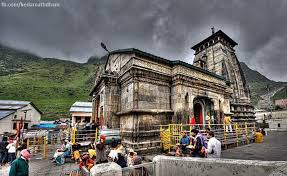The Realisation of the Absolute :4-1-7.
Kedarnath temple
Chapter 4: The Nature of Reality : 1
1. BRAHMAN AS EXISTENCE OR BEING : 7.
It is “the being and the beyond, the expressed and the unexpressed, the founded and the unfounded, consciousness and unconsciousness, reality and unreality, the real, and whatever that is.” —Taitt. Up., II. 6.
The Brihadaranyaka Upanishad (II. 3. 1) says that Brahman has two forms, “the formed and the formless, the mortal and the immortal, the existent and the moving, the real and the beyond.”
There is a contrast between Brahman and the name-and-form world, the former being the beyond, the inexpressible, the foundationless, the unconscious, the unreal in relation to the latter which is empirically experienced as the being, expressible, founded, conscious, real.
Logically, attribute or quality itself becomes an unsound concept when it is extended to the Absolute.
A thing has an attribute only in relation to another thing.
There is no meaning in saying that a substance has an attribute when that substance alone is said to exist.
The nature of a self-existent absolute principle is indeterminable.
Every attribute limits it and creates a difference in non-
Brahman cannot be said to have any intelligible attribute, for Brahman is the entire existence and has nothing second to relate itself to.
Swami Krishnananda
To be continued .....





Comments
Post a Comment